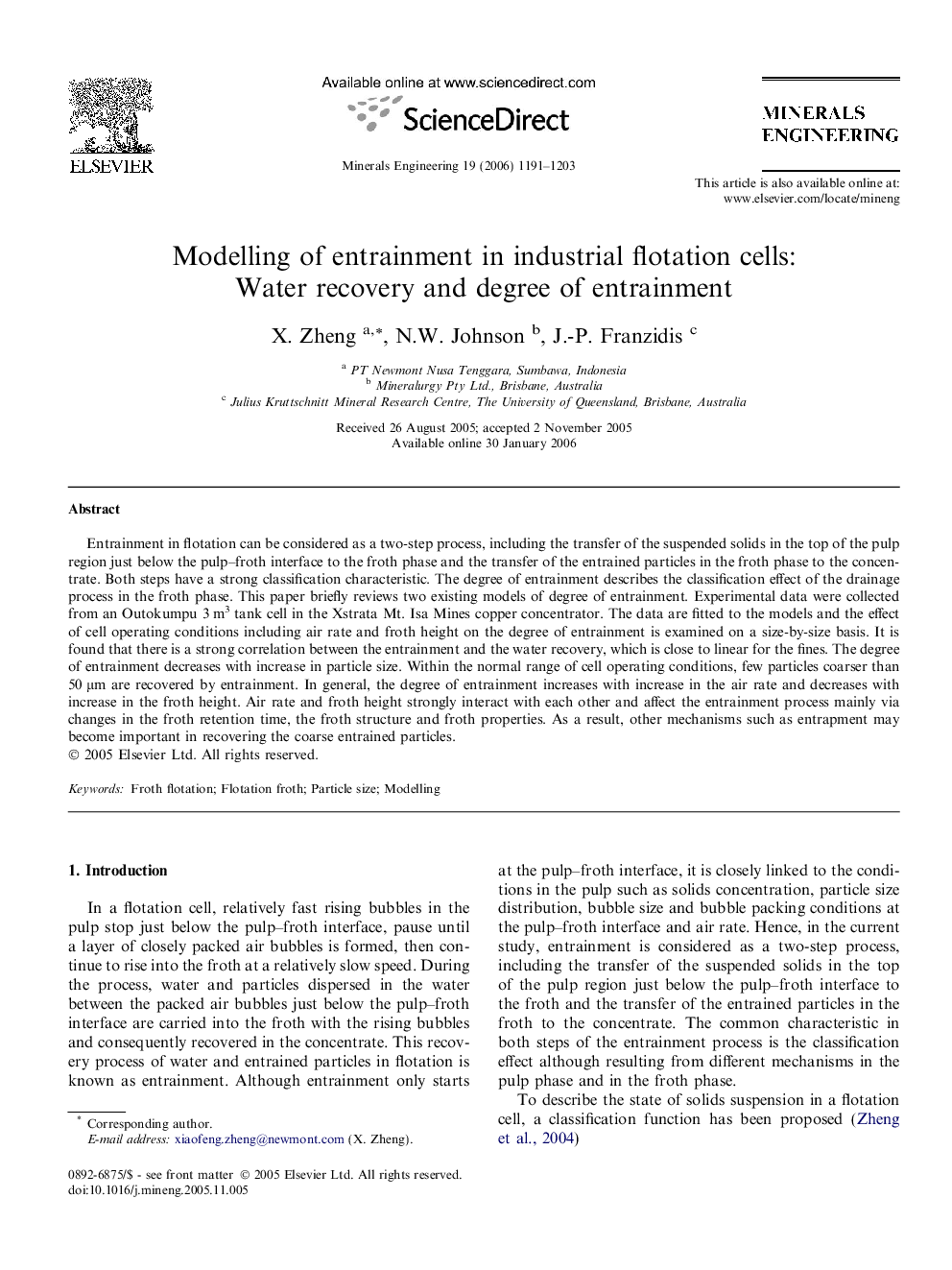| Article ID | Journal | Published Year | Pages | File Type |
|---|---|---|---|---|
| 234733 | Minerals Engineering | 2006 | 13 Pages |
Entrainment in flotation can be considered as a two-step process, including the transfer of the suspended solids in the top of the pulp region just below the pulp–froth interface to the froth phase and the transfer of the entrained particles in the froth phase to the concentrate. Both steps have a strong classification characteristic. The degree of entrainment describes the classification effect of the drainage process in the froth phase. This paper briefly reviews two existing models of degree of entrainment. Experimental data were collected from an Outokumpu 3 m3 tank cell in the Xstrata Mt. Isa Mines copper concentrator. The data are fitted to the models and the effect of cell operating conditions including air rate and froth height on the degree of entrainment is examined on a size-by-size basis. It is found that there is a strong correlation between the entrainment and the water recovery, which is close to linear for the fines. The degree of entrainment decreases with increase in particle size. Within the normal range of cell operating conditions, few particles coarser than 50 μm are recovered by entrainment. In general, the degree of entrainment increases with increase in the air rate and decreases with increase in the froth height. Air rate and froth height strongly interact with each other and affect the entrainment process mainly via changes in the froth retention time, the froth structure and froth properties. As a result, other mechanisms such as entrapment may become important in recovering the coarse entrained particles.
